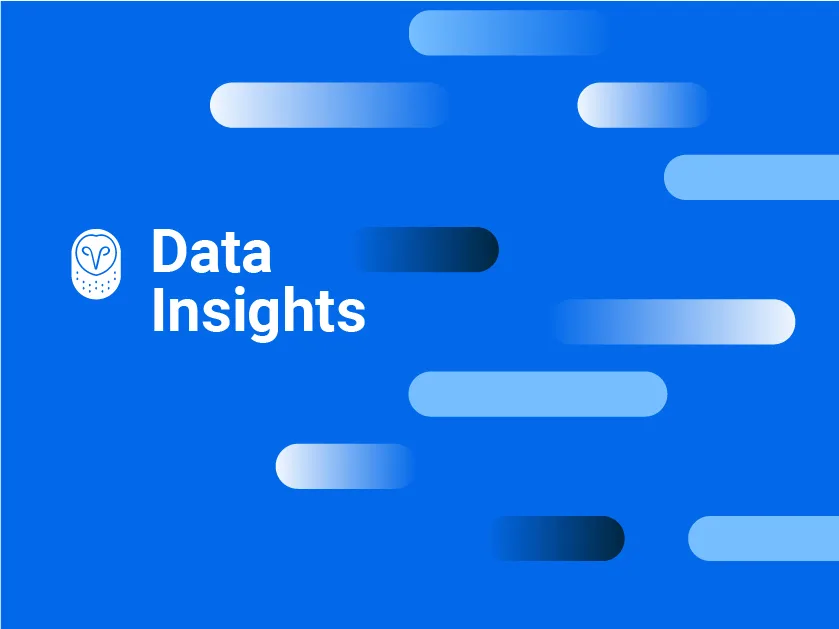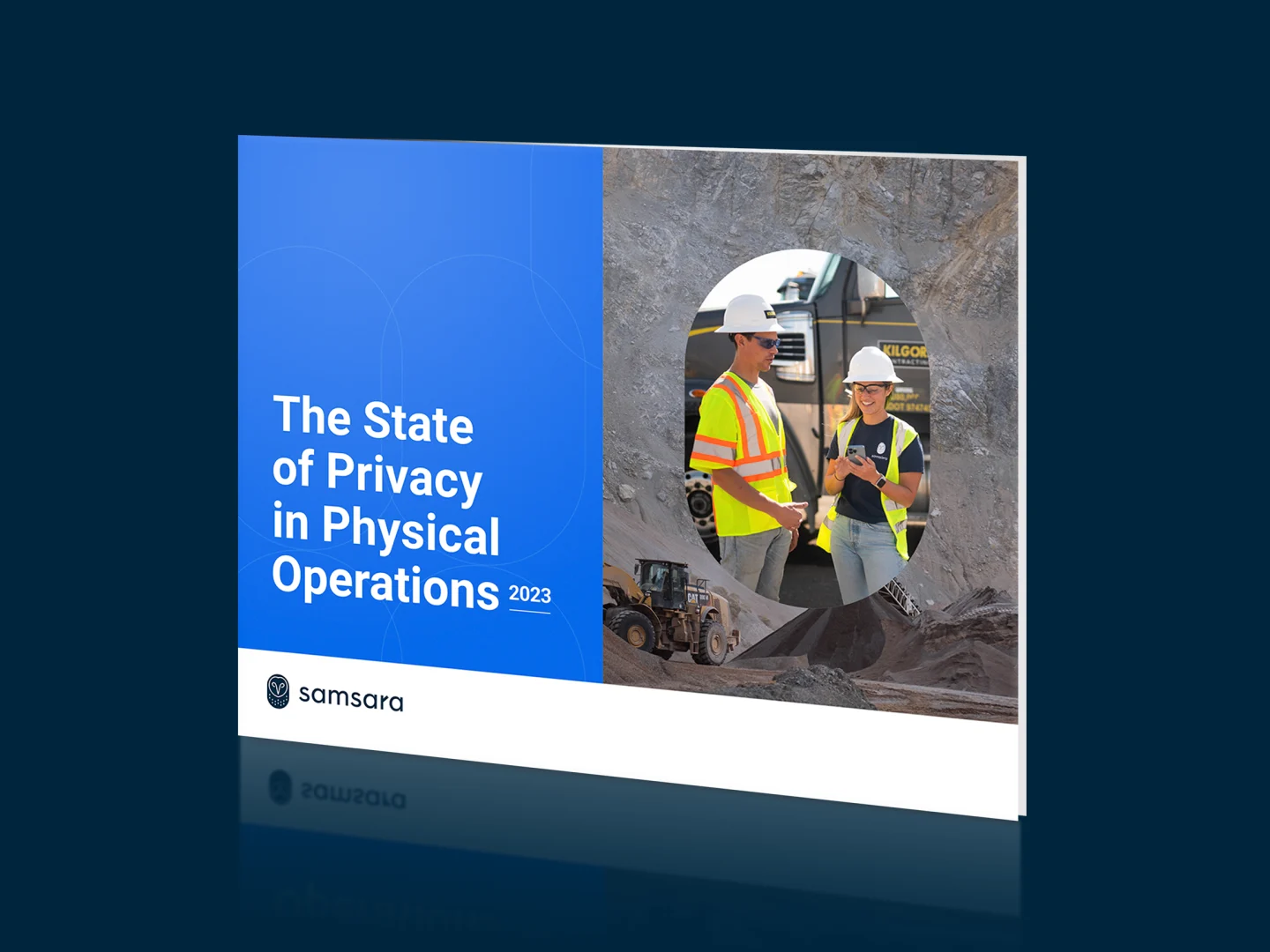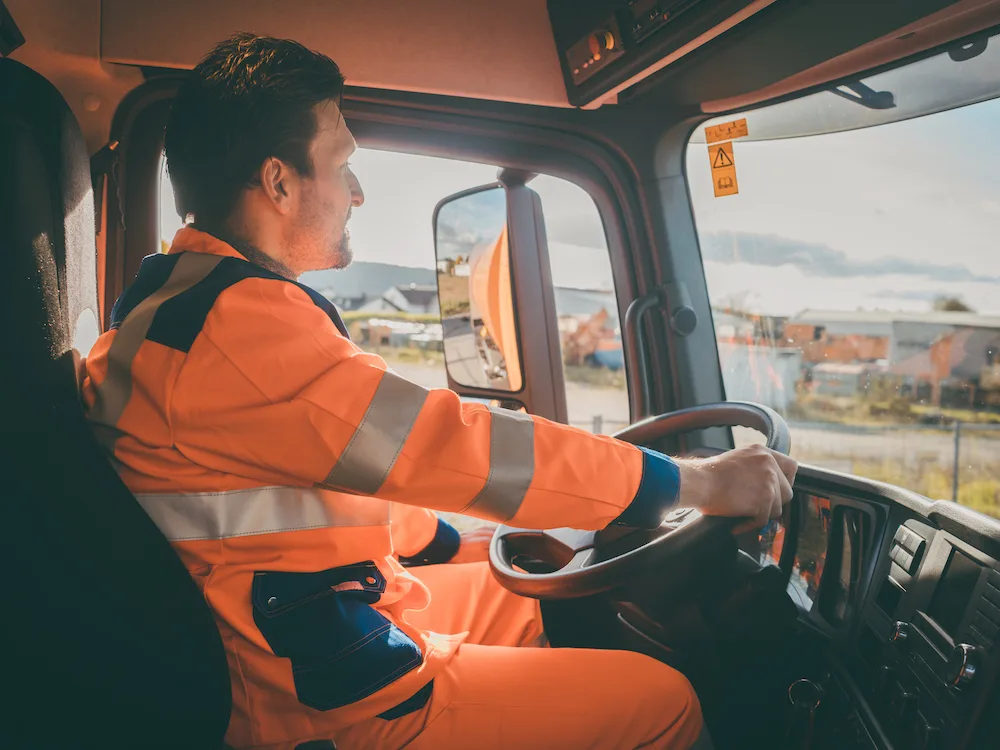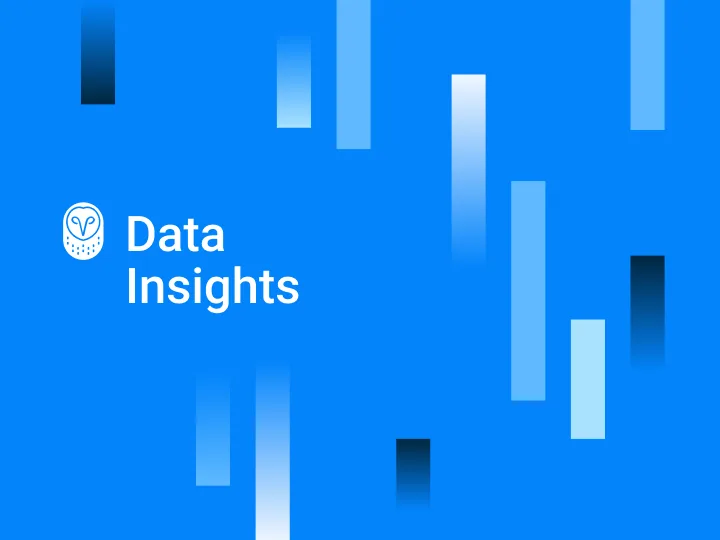Data Insights & Analytics
Data Shows Operations are Becoming Increasingly Connected as Pandemic Accelerates Digitalization
April 20, 2021

Since the invention of the internet and cloud computing, we have seen a steady shift in the way organizations operate as they leverage digital tools to work smarter and faster. But while Gartner reports that 87% of senior leaders say digitalization is a priority, only 40% of organizations have brought digital initiatives to scale.
In the past year, the COVID-19 pandemic has accelerated this “shift towards digital” dramatically. The sudden increase in remote working and shifting customer preferences towards remote interactions and real-time data has brought about an accelerated digital transformation—one we are currently in the middle of. In fact, a new McKinsey & Company survey found that organizations had accelerated the digitalization of their customer interactions, supply chain interactions, and core internal operations by three to four years and acted 20 to 25 times faster than expected in enacting these changes.
At Samsara, we’re seeing this accelerated digital transformation play out firsthand. Our 20,000+ customers—spanning diverse industries such as transportation, utilities, manufacturing, the public sector, and more—are leveraging digital tools like our open API and mobile apps at a rapidly increasing rate. As their operations become increasingly interconnected, we’re also seeing more organizations adopt our cloud-based solutions across not just one or two areas of their operations, but four or five.
Using cohort analysis to control for growth in our customer count, we analyzed aggregated data from thousands of customers to reveal how organizations are experiencing this accelerated digital transformation. Read on to learn our biggest discoveries.
Key findings
Analyzing a sample cohort of thousands of customers, we saw an 80% increase in API pings to our Connected Operations Platform from January 2020 to March 2021, signaling that organizations are looking for new ways to break down data silos, customize their tech stack, and boost productivity through automated workflows.
Similarly, among a different sample cohort of thousands of customers, we saw an 18% increase in overall usage of our mobile Driver App and 45% increase in usage of our digital Documents feature from January 2020 to March 2021. The pandemic accelerated the adoption of these tools by both employees in the field and back-office—who are embracing the benefits of increased productivity and efficiency by going paperless.
Looking at an industry-specific subset of our customer base, from September 2020 to March 2021, we saw a 20% increase in the number of transportation and warehousing customers within this cohort connecting their operations on the cloud by using our solutions across three or more distinct areas. This reveals how cloud-based digitalization is expanding beyond vehicle telematics (where it first began with AOBRDs and ELDs) into operational areas like site security and equipment monitoring, where organizations are modernizing their technology stack and looking for ways to make that expansion smooth by using a single cloud-based platform.
Keep reading to learn more about each of these trends and the impact of this accelerated digital transformation.
Organizations are increasingly leveraging API integrations to break down data silos and automate workflows
A key element of digitalization is leveraging Application Programming Interfaces (APIs), which enable organizations to share information between different systems. When organizations create system integrations via APIs, it empowers them to develop new workflows and unlock automation that wouldn’t otherwise be possible. In fact, many organizations have identified APIs as their “largest enabler of digital transformation strategies.”
Samsara’s Connected Operations Platform offers an open API and robust ecosystem of integrations, which allows our customers to share data with the critical systems that are already part of their day-to-day operations, including transportation management systems (TMS), fuel cards, payroll systems, and more.
Usage of our API has increased dramatically over the past year. To control for new customers implementing Samsara, we analyzed a sample cohort of thousands of customers from January 2020 to March 2021. Over that time period, we saw an 80% increase in pings to our API, across a wide range of different integrations.
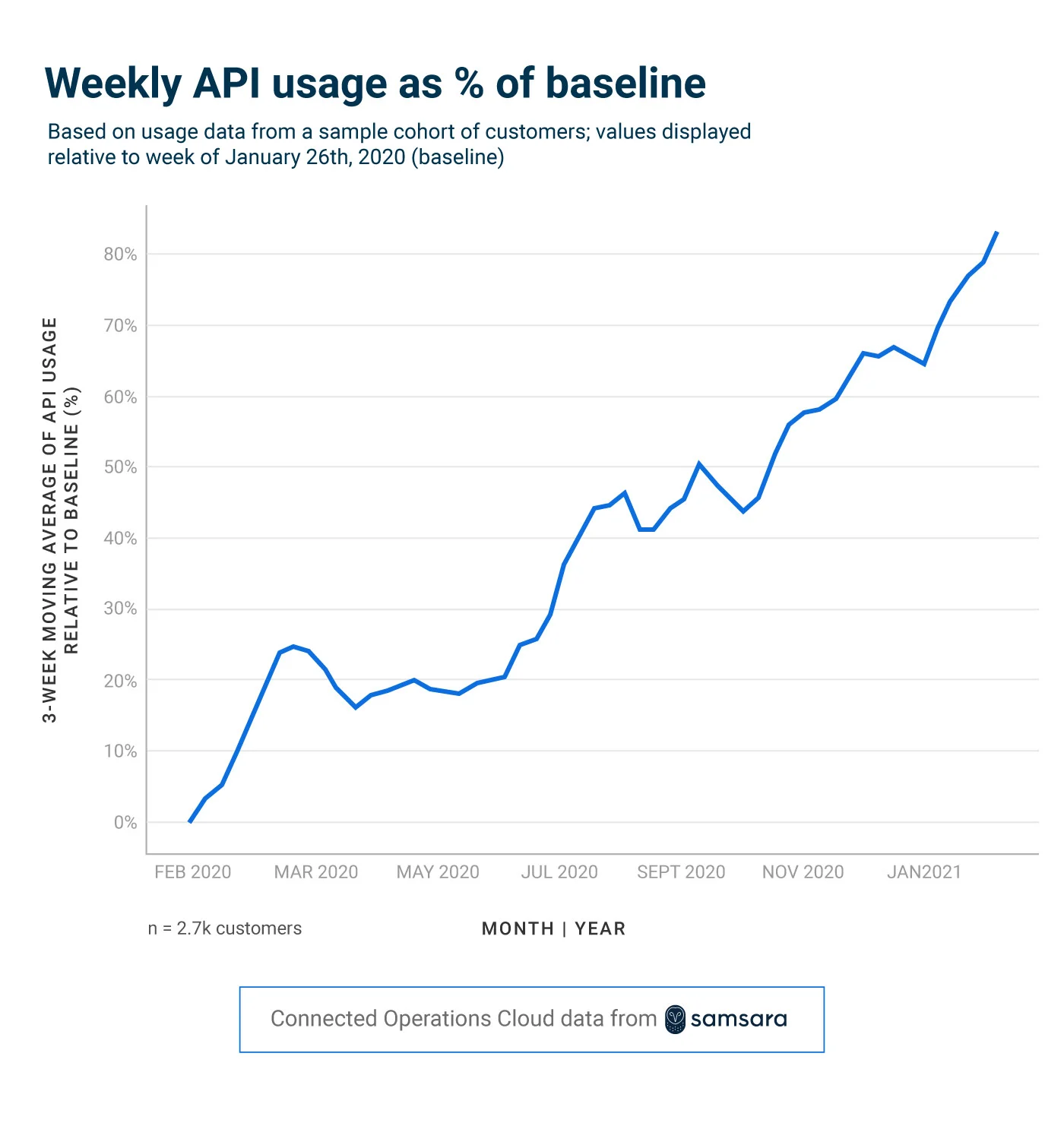
This dramatic increase in API usage signals that organizations are becoming more sophisticated in their use of technology and data. They've moved beyond simply collecting data to use within a single system and are increasingly connecting systems across their organization to empower other teams, create new workflows, and digitize previously manual processes.
For example, TCI Transportation used Samsara’s API integration with McLeod LoadMaster® to automate route assignment and tracking, transforming their day-to-day operations through digitalization. “With [this API integration], our dispatchers don’t have to spend their days manually processing orders,” said Andy Figueroa, Director of Quality Assurance at TCI. “It has freed up their time to focus on ensuring their drivers are running efficiently.”
Remote productivity tools made necessary by COVID-19 saw huge adoption gains last year, and are likely here to stay
When the COVID-19 pandemic took hold in March 2020, organizations had to adapt to a new normal—a world where in-person interactions were risky. One way organizations are adapting to this changing environment is by embracing digital tools that enable remote work.
For example, with the Samsara Driver App, drivers can “clock in'' and access assigned routes without an in-person interaction. And with our Documents feature, drivers can upload digital documents (like DVIRs and proofs of delivery) to back-office administrators remotely in real time—enabling contactless document collection.
Even before the pandemic, there was already an industry-wide shift towards using digital tools to increase efficiency. As a result of COVID-19 accelerating this existing trend, usage of our Driver App and digital Documents feature has increased dramatically over the past year. To control for new customers implementing Samsara, we analyzed a sample cohort of thousands of customers from January 2020 to March 2021. Over that time period, we saw an 18% increase in Driver App usage and a 45% increase in digital document submissions.
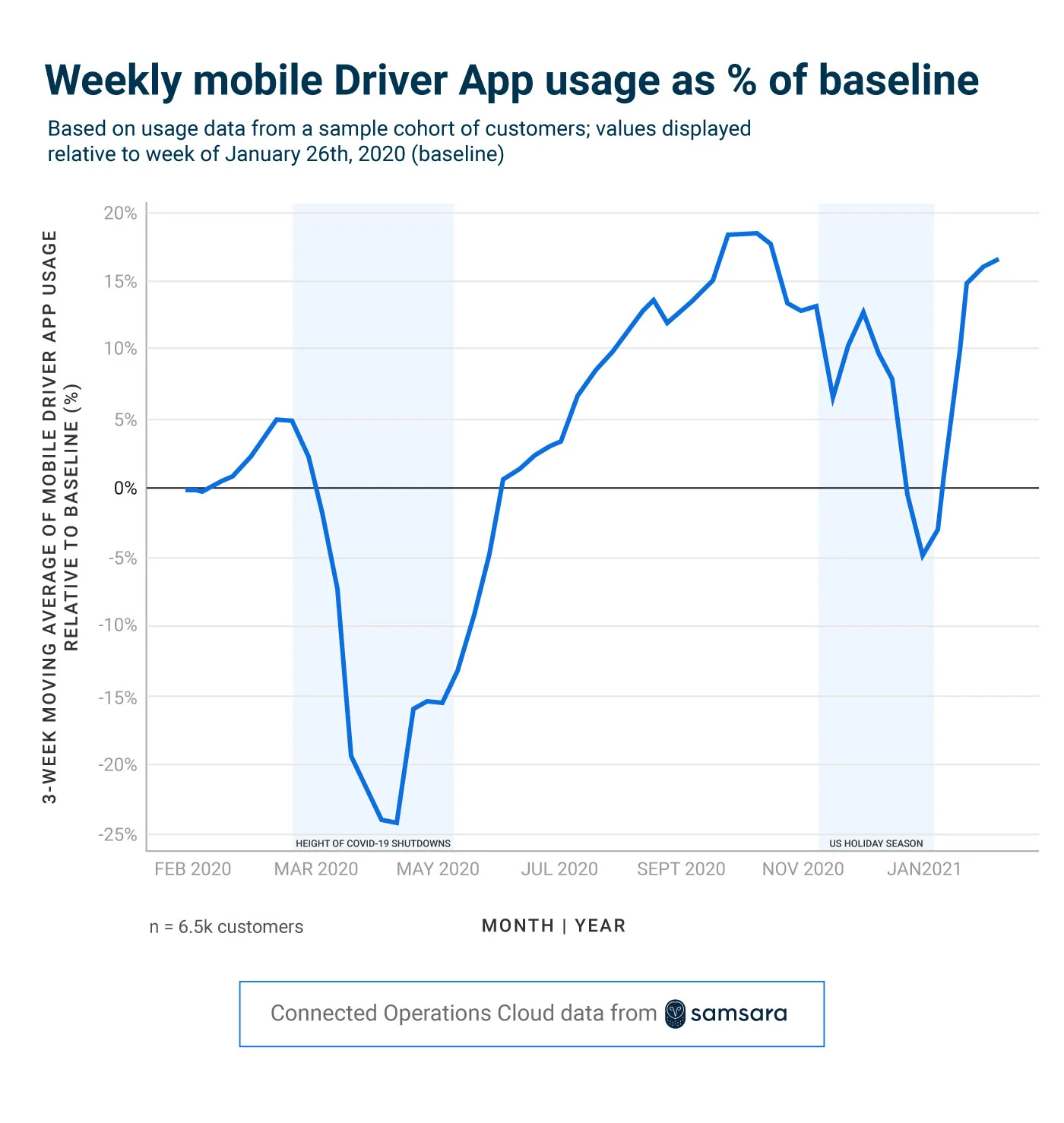
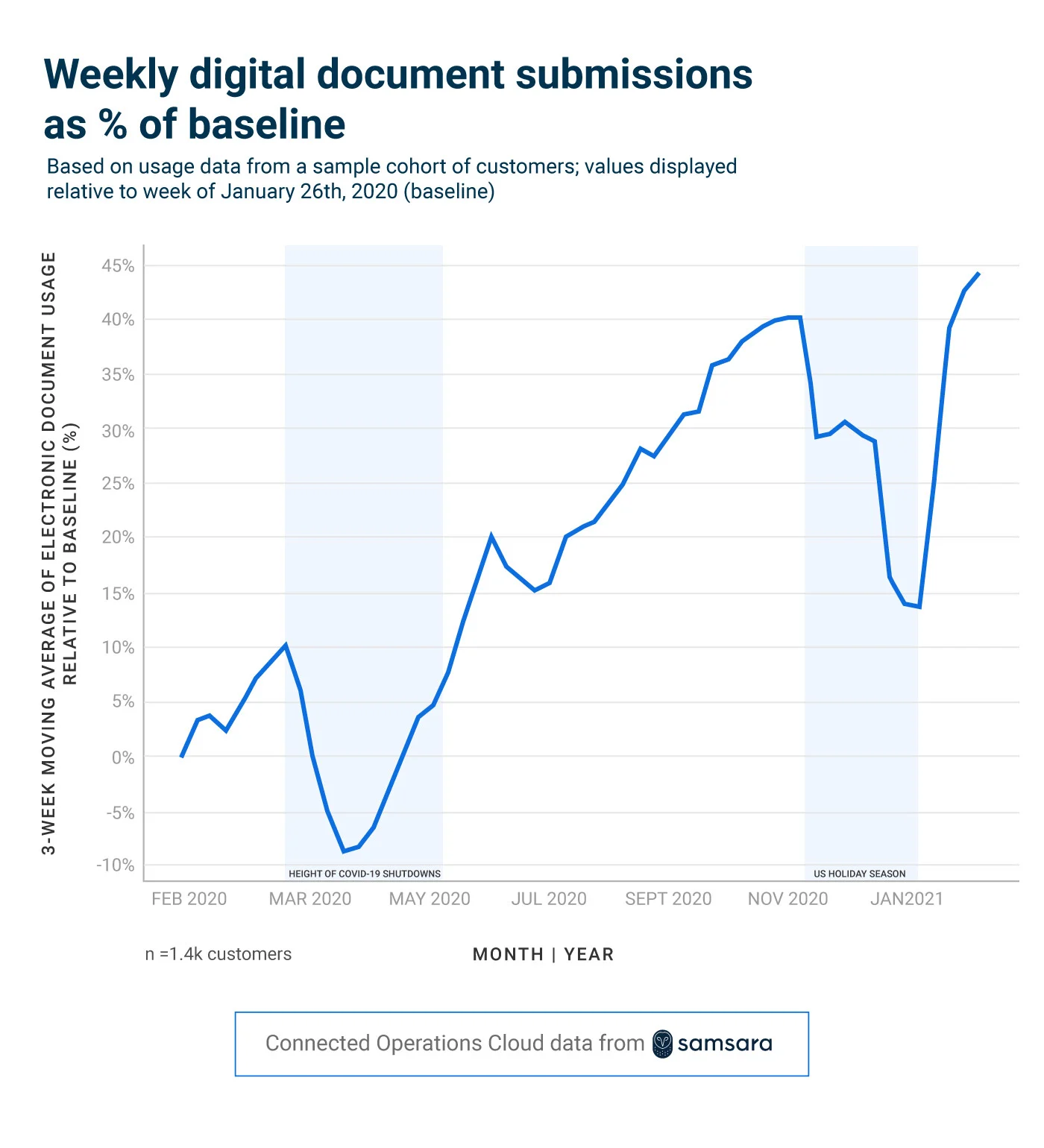
As you can see in the charts above, we initially saw a decrease in activity when COVID-19 first hit in March 2020—mirroring trends we first observed in June 2020—as organizations reacted to shutdown orders. But since then, we have seen a dramatic increase in both Driver App usage and digital document submissions, signaling increased reliance on these remote productivity tools.
Based on this usage data and qualitative insights from customers, it seems likely that adoption of these digital tools will continue to increase even after the pandemic ends. COVID-19 may have accelerated the need for drivers and back-office administrators to communicate remotely, but these digital tools have paid off in spades in the form of increased productivity and efficiency. As a result, organizations are continuing to “go paperless” and modernize their internal operations through digital workflows.
For example, Western Concrete Pumping (WCP), one of the nation's largest concrete pumping companies, has increasingly relied on mobile workflows to communicate with drivers during the pandemic. "Before COVID-19, we used to travel to each branch office and train operators in person,” said Carol Heinz, Fleet Administrative Assistant at WCP. “[Now,] we can be more confident that our drivers are completing the right tasks in the right sequence, even now that we're working remotely."
Organizations are connecting their operations on the cloud
Fleet operations have been going through a digital transformation ever since 1988, when the federal government first mandated the use of automatic on-board recording devices (AOBRDs) to digitally record HOS for compliance purposes. Since then, the ELD mandate has continued to fuel digitalization in fleet operations.
But organizations with vehicles tend to have other operational areas that are ripe for digitalization, too. In recent years, fleets have increasingly adopted dash cams and driver coaching tools, making video-based telematics the “new norm.” In addition, many of these organizations have equipment that needs to be tracked and warehouses that need to be monitored, especially now that the COVID-19 pandemic has accelerated the need for remote visibility across all areas of operations.
To see how our own customers are expanding digitalization beyond fleet operations, we looked at a sample subset of our customer base in the transportation and warehousing industry from September 2020 to March 2021. Over that time period, we saw a 20% increase in the number of transportation and warehousing customers digitally connecting their operations on the cloud by using our solutions across three or more distinct areas—going beyond vehicle telematics into driver safety, site security, equipment monitoring, and more.
This reveals how cloud-based digitalization is expanding beyond vehicle telematics into other operational areas where organizations are modernizing their technology stack—and looking for ways to make that expansion smooth by using a single cloud-based platform.
Food Express, for example (a bulk transportation business based in California) now relies on Samsara’s cloud-based solutions across four of their operational areas, digitally transforming their entire business. In 2020 alone, they expanded from Vehicle Telematics into Equipment Monitoring, Video-Based Safety, and most recently Site Visibility—our newest solution that leverages artificial intelligence to bring advanced features, like proactive alerting, to IP security cameras. “We get complete visibility this way and can view everything from a single Samsara dashboard,” said Jim Terry, Director of IT at Food Express.
The future of connected operations
We believe that the world of industrial operations is at the precipice of a massive wave of digital transformation. The proliferation of IoT connectivity, cloud computing, advances in camera technology, and artificial intelligence are all driving digital adoption—and the effects of the COVID-19 pandemic have accelerated this trend.
This will make the coming years ones of exciting transformation for organizations across a wide array of industries, from transportation to local government, utilities, manufacturing, and beyond. Samsara’s mission is to increase the efficiency, safety and sustainability of the operations that power the global economy, helping these organizations adapt and thrive in this new era.
Subscribe to our series for more data insights
Want more insights like this from Samsara? Hear about the latest connected operations trends as soon as they're released by subscribing to Samsara Data Insights.
Samsara customers have traveled on 99% of major roads in the U.S., and we collect more than 2 trillion sensor data points annually from IoT devices used by customers across diverse industries. By organizing and analyzing these large volumes of data at scale—while taking the necessary measures to ensure complete customer privacy—our data science team reveals insights you can apply to your own organization.
Subscribe now to get the latest insights delivered straight to your inbox.
SubscribeMethodology
For more information about your rights, and how we may process your personal data, please see our privacy policy. Methodology notes:
For each of the charts/metrics produced for this article, we looked at cohorts of customers who joined Samsara prior to the time period examined in order to control for the effects related to our growing customer base.
The customer cohorts varied in size (from 1.4K - 6.4K) but sample sizes were large enough to produce statistically significant trends and ensure complete anonymity of the customer sample.
All charts presented show figures as relative to a pre-COVID-19 baseline. Positives values illustrate percent growth against the baseline and negative values show decline.


